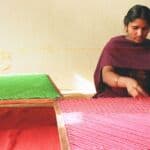Financing Women- Owned or -Led SMEs for Sustainable Growth: Navigating Capital Supply Side Challenges in Africa
Make your way through any African city, and you’ll see women entrepreneurs everywhere you look. You will find them operating the water “ATMs” that line Kigali’s street corners, running a popular chain of coffee shops focused on youth employment in Kampala, or managing a cavernous macadamia nut processing plant in Nairobi — and maintaining shops and other enterprises everywhere in between. Indeed, a staggering one in every four African women owns or manages a business, according to the Global Entrepreneurship Monitor. And in a number of countries in sub-Saharan Africa, the rates of entrepreneurial activity among women rise to 30-50%.
Despite this incredible entrepreneurial energy, however, the vast majority of these women- owned or -led small and medium enterprises (WSMEs) remain small in scale. And this is hardly the fault of these women entrepreneurs. Investors and other capital providers have long struggled to provide WSMEs with the support they need to grow and thrive. For instance, just 6% of funding in sub-Saharan Africa goes to WSMEs, according to a 2019 International Finance Corporation (IFC) report — despite the fact that female borrowers are far more reliable: A 2017 IFC study showed their rate of nonperformance is 53% lower than that of their male counterparts.
This begs a question: If there is such a good business case to be made for investing in African women — not to mention the social and developmental value of doing so — what is holding the continent’s capital providers back? In our decade-long experience at Open Capital — during which we’ve provided business and transaction advisory services to hundreds of African WSMEs — we have observed that capital providers’ reluctance to invest in the continent’s women comes down to two main factors: bias (conscious or unconscious) and exclusionary financial products or services. Both play an insidious — often nearly invisible — role in maintaining a deeply inequitable status quo.
Understanding Investor Bias Against Women-Led Businesses
What do we mean by that? Take the question of bias. A 2014 study found that investors were over twice as likely to fund the exact same startup if the pitch was delivered to them by a male founder rather than a female founder. And other research has found that this bias is due at least in part to the fact that male-led businesses are seen as having more “potential,” since investors tend to correlate traditionally male attributes with entrepreneurial success, and may try to replicate past successes by seeking out entrepreneurs who are similar to those they have previously supported — which are most often men.
Since 2010, we’ve raised more than $420 million for WSMEs and other inclusive businesses in Africa, and we’ve seen how investors can miss good investment opportunities in high potential WSMEs by not being gender sensitive. Often, the bias begins even earlier than the pitching stage. Many women entrepreneurs never reach the point of presenting to investors at all, because those investors choose businesses to consider from existing, male-dominated sourcing pipelines of “high potential” companies. And female founders who do get a chance to pitch are frequently sidelined by muddled or loose guidelines for due diligence, which may lead investors to unconsciously gravitate towards men whose pitching style and approach feel more familiar to them. For example, research has shown that investors disproportionately grill female founders about the risks associated with their businesses, while asking male founders more questions about their companies’ potential for growth. For the most part, these investors aren’t trying to be sexist. But when there are few women on decision-making committees (resulting in less diversity of thought), or when there are inconsistent metrics for measuring a business’ risk and growth opportunities, they often simply default to business as usual. And as a result, they can look straight past the high-potential WSMEs in their midst.
Meanwhile, when it comes to the financial products and support services offered to businesses, many potential investors are stuck in old ways of assessing risk and reward. We often see investors and financial institutions decline to finance WSMEs because these female founders don’t own property or other items of value that they can put up as collateral. Investors’ limited capacity to provide pre-investment support can also leave WSMEs in the dark about funding opportunities, what investors are looking for, how they can best position themselves to increase their chances to access these opportunities — or how to best use capital once it has been invested.
Solutions for Increasing Investment in African WSMEs
Of course, one obvious solution to the problems of both bias and financial exclusion is to set up funds or design financial products that directly target women. For instance, in 2022 KCB Bank Kenya announced the creation of a KShs 250 billion (US $1.65 billion) fund called “Female-Led and Made Enterprises,” which offers alternative options for collateral, a faster application process, and non-financial support to WSMEs from partner organizations.
Similarly, Nigeria’s Access Bank offers its “W Power Loan,” which loans money to WSMEs at a lower interest rate and with a smaller minimum borrowing amount than traditional loans. Meanwhile, on a larger scale, the African Development Bank has run a program since 2020 called “Affirmative Finance Action for Women in Africa,” which is tackling the exclusion of women-run businesses from three sides: finance, technical assistance and the enabling environment. In addition to providing guarantee mechanisms for banks, the initiative offers training to WSMEs and other groups of women on financial literacy and business development. The Bank is also working with governments to support legal, policy and regulatory reforms aimed at striking down the structural barriers impeding women in business.
But important as these efforts are, much more needs to be done. In our work, we see enormous potential in the rising field of gender lens investing. As many NextBillion readers know, this is an investment strategy that deliberately considers impact on women alongside profit and other conventional metrics for business success. It asks investors to consider not only who owns and leads a business, but also the company’s gender strategies and policies, as well as its inclusiveness of women along its supply chain, from its employees all the way to its consumers.
To give an example of how this all works in practice, a new impact investor approached us recently for assistance. They had been set up to invest in businesses that were creating opportunities for women in historically male-dominated fields like construction and technology. They wanted to make sure these companies really walked the talk when it came to gender inclusiveness. But they knew that if they used conventional methods of due diligence — studying only the companies’ track records, financials and growth potential — they would have no way to understand how well these businesses were actually serving women. To address these concerns, we helped them add a gender lens to their due diligence, looking at metrics like wage disparities, strategies to attract, retain and develop women employees, and market impact potential on women. As a result, the investor developed a strong interest in a company that would not have otherwise been seriously considered, and connected this company to pre-investment technical support to enable them to improve their operations and become more attractive for funding.
We took a similar approach in our work with USAID’s Feed the Future Inclusive Agricultural Markets project in Uganda, which works to improve food security and promote agriculture-led development in that country. They came to us asking how they could get more funding to agri-businesses that were focusing on women as leaders, employees and consumers, by helping these businesses become investment-ready, so they could raise capital from other funders beyond USAID. In response, we developed a comprehensive framework that investors could use in their origination and due diligence processes. It included, among other things, specific metrics for scoring gender inclusiveness from the boardroom all the way down through the value chain to consumers. Then we ran a pilot, using this new rubric to select 12 businesses and provide them with technical support to develop their business strategies and understand their capital requirements. We did this to ensure these companies were best positioned for success when they approached funders. And indeed, several of these businesses secured loans or investments soon after.
As these examples show, increasing investment in African WSMEs defies simple solutions. It will require a transformation of both the financial products on offer and the attitudes and considerations of the investors offering them. But finding ways to invest in WSMEs is likely to lead to enormous financial and social rewards. According to the African Development Bank, women generally reinvest up to 90% of their income in their families and communities, compared to 40% for men. That means closing the $42 billion gender financing gap facing female entrepreneurs in Africa will have effects that ripple far beyond these WSMEs themselves. It is good business for a society to invest in its women, in Africa and across the world. We are eager to see more capital providers become a part of that future.
Nathalie Gogue-Ebo is a Partner and Katharina Weber is a Project Leader at Open Capital.
Photo courtesy of UN Women Africa.
- Categories
- Investing



